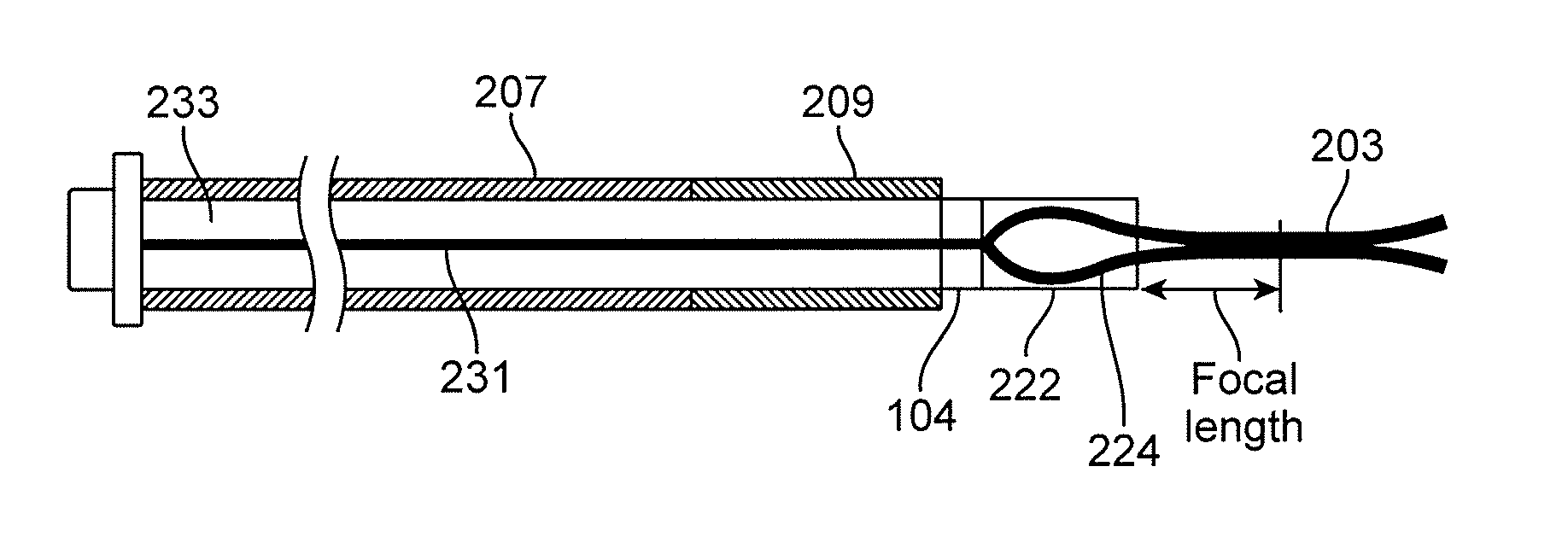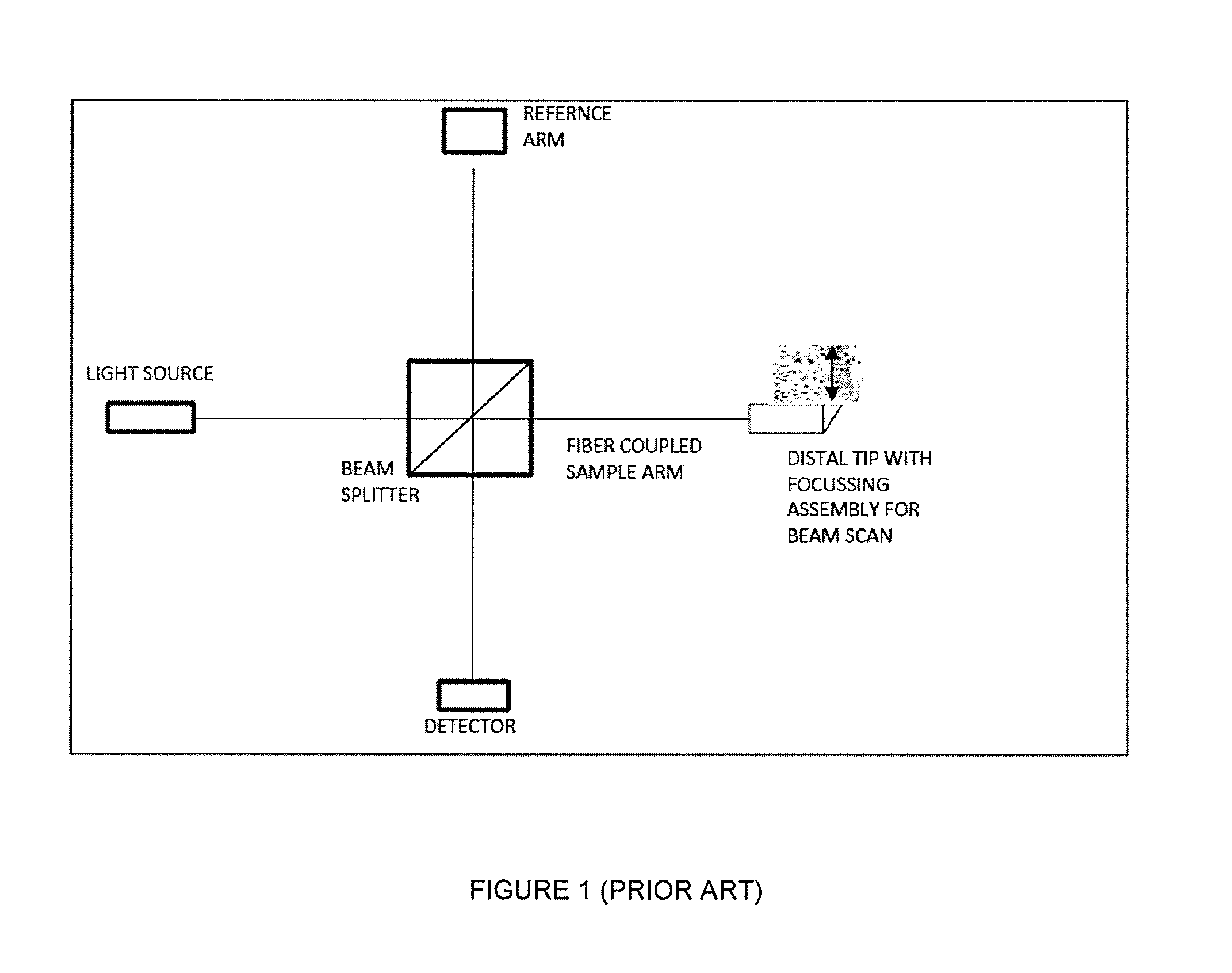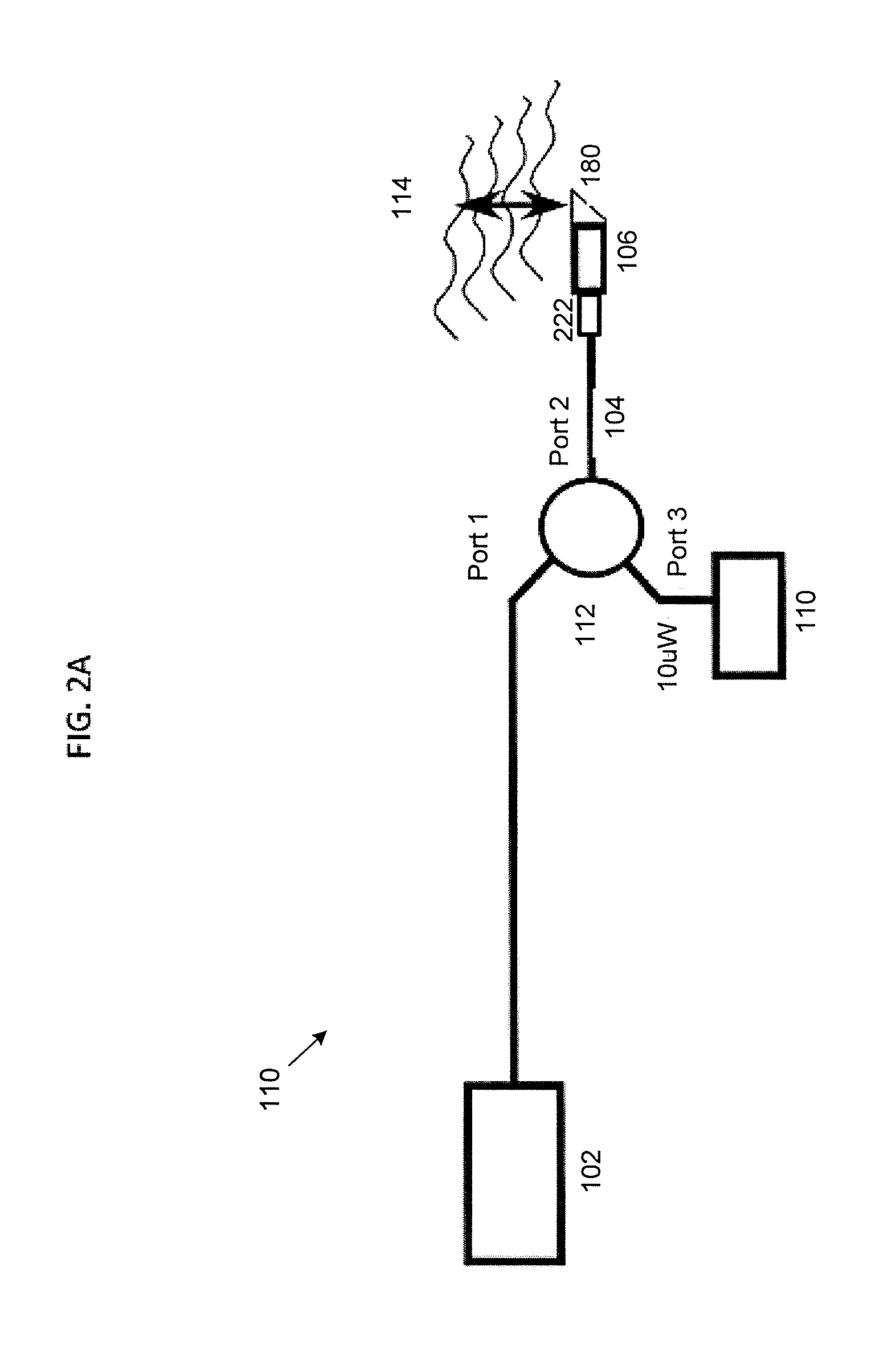Optical coherence tomography with graded index fiber for biological imaging
a technology of optical coherence tomography and biological imaging, which is applied in the field of catheter-based imaging systems using optical coherence tomography, can solve the problems of affecting the normal operation of the body,
- Summary
- Abstract
- Description
- Claims
- Application Information
AI Technical Summary
Benefits of technology
Problems solved by technology
Method used
Image
Examples
Embodiment Construction
[0040]The Optical Coherence Tomography (OCT) catheters and systems described herein are configured to provide image guided intra-vascular procedures that may be particularly useful for the diagnosis and / or treatment of arterial disease. The systems may include a catheter, an umbilical connection, and a console. The system uses OCT to form an image of the intravascular environment close to the catheter cutter. During intraluminal procedures, such as atherectomy, problems can arise as a result of failure to properly identify target tissue. By using a catheter having a common path optical fiber for OCT, proper identification of target tissue can be improved.
[0041]In general, the catheters described herein include a common-path system with a graded index (GRIN) fiber attached to the distal tip of a single mode optical fiber in the catheter so as to act as a lens for focusing light. The distal portion of the GRIN fiber is modified to provide a reference reflection between −28 dB and −45 ...
PUM
| Property | Measurement | Unit |
|---|---|---|
| outer diameter | aaaaa | aaaaa |
| thickness | aaaaa | aaaaa |
| distance | aaaaa | aaaaa |
Abstract
Description
Claims
Application Information
 Login to View More
Login to View More - R&D
- Intellectual Property
- Life Sciences
- Materials
- Tech Scout
- Unparalleled Data Quality
- Higher Quality Content
- 60% Fewer Hallucinations
Browse by: Latest US Patents, China's latest patents, Technical Efficacy Thesaurus, Application Domain, Technology Topic, Popular Technical Reports.
© 2025 PatSnap. All rights reserved.Legal|Privacy policy|Modern Slavery Act Transparency Statement|Sitemap|About US| Contact US: help@patsnap.com



